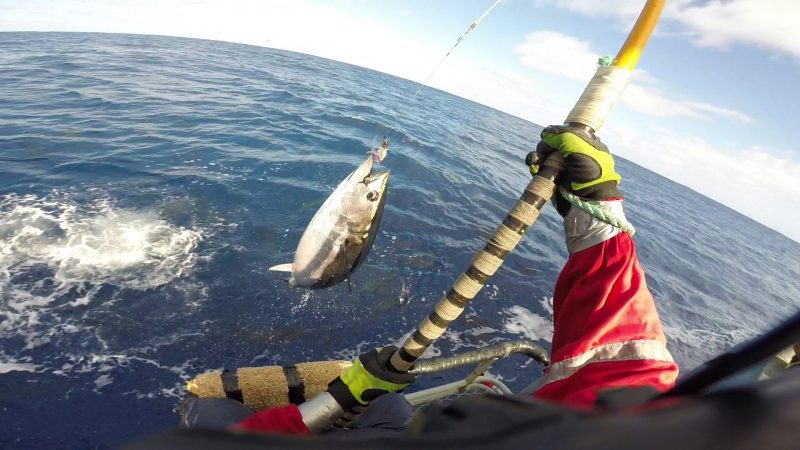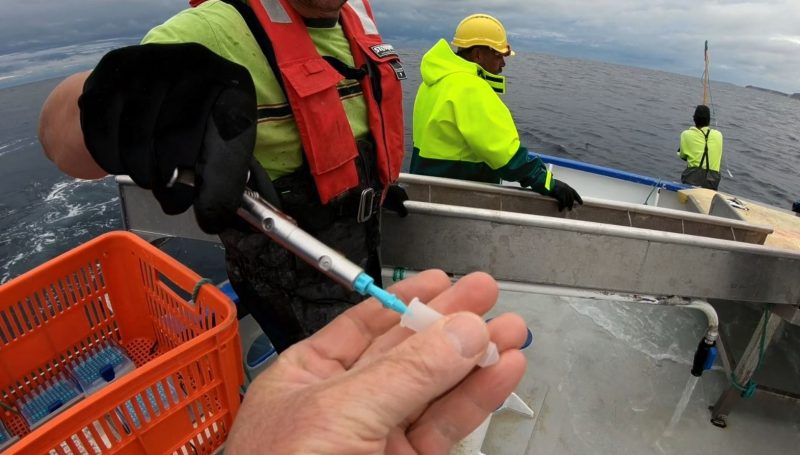Keeping tuna sustainable
Southern bluefin tuna numbers are taking a turn for the better, with the fishery meeting sustainable fishing standards.
Australia’s valuable southern bluefin tuna (SBT) fishery operates out of Port Lincoln in South Australia and along Australia’s east coast. It is part of the internationally managed fishery, estimated to be worth over $800 million. A prized recreational fishery for SBT also exists across the southern states.
The recent assessment of the status of SBT shows that the size of the stock has steadily increased over the last decade. In 2021, the Australian Status of Fish Stocks Report recognised the stock status had improved and SBT is no longer classed as “over-fished”. In addition, the International Union for Conservation of Nature (IUCN) has recognised that the population is increasing. Science has played a critical role in helping the stock recover.
Transformative science for sustainable fishing
“The fishery has gone from a poor case to best case,” said CSIRO fisheries scientist Ann Preece.
“Our team has been applying innovative methods for monitoring fish abundance, to help provide informative data for good management. We have also developed management decision-making rules that use this data to determine global catch limits. These rules are scientifically tested to ensure effective management of SBT.”
Bringing international fisheries scientists together
Australia is a founding member of the Commission for the Conservation of Southern Bluefin Tuna (CCSBT) which brings together representatives from countries that fish for SBT.
“We’ve been working with the International Scientific Committee at the Commission to better understand changes in the population and current stock status. This includes improving the monitoring and management of the stock and fishery,” Preece explained.
“To do this, we have designed two unique data collection methods. One method uses the unique genetic ID of each individual fish in a genetic-tagging program. This provides estimates of juvenile abundance. The other is a genetic technique called close-kin mark recapture (CKMR). Using DNA and mathematics, CKMR provides information on SBT adult abundance, reproduction and mortality.

CSIRO is using DNA from juvenile southern bluefin tuna to monitor their abundance. Photo by CSIRO.
“The data we have collected provides critical information for the new management system to continue to rebuild the stock and keep catch levels sustainable. The management rules are used for setting the total allowable catch for the global fishery.”
Genetic tagging of juvenile tuna
Using the DNA of fish has overcome the issues with conventional tagging programs that were used for SBT from the 1960s to 2000s.
“Conventional tagging programs use physical tags to mark fish,” said Preece.
“They provide informative data, but tags can be lost at sea, or not returned to scientists.”
To overcome this problem, CSIRO researchers changed methods to use a genetic life-long tag. Large numbers of fish are ‘tagged’ by taking a tissue sample to determine the fish’s DNA fingerprint. They are then released back to sea. A year later, scientists sample a large number from the commercial harvest, thanks to co-operation from the Australian SBT fishing industry.
“The DNA fingerprints of tagged fish are compared with fish from the harvest. This enables us to estimate the size of the population from the number of tagged fish we find in the harvest samples. Furthermore, this method provides information that is precise and cost-effective, so is used for management of the global stock,” Preece said.
“The genetic tagging program provides an early warning of low numbers of young fish in the population. This is important as the number of juveniles affects the size of the adult stock. The new management system responds to this information to adjust catch limits if necessary.”
Counting fish is in the DNA
Close-kin mark recapture (CKMR) is the other genetic technique used to help manage the SBT stock.

Taking a tissue sample determines the fish’s DNA fingerprint, which serves as a life-long tag. Photo by CSIRO.
It is used specifically to monitor the abundance of adult SBT. It also measures other demographic parameters, such as survival and reproductive contribution of adults of different age and size. Importantly, it doesn’t rely on fishery catch and effort data.
“This method uses DNA to detect closely-related kin,” Preece said.
“We can match parents with offspring, and find matching siblings and half siblings, from tissue samples of adults and juveniles.
“The number of kin matches provides a direct measure of reproductive adults in the stock. This is the primary measure used in the Commission’s rebuilding plan.”
World-class fisheries management
The future impacts of this research are wide-reaching. The technologies are transferrable to other fish and wildlife species to assist with conservation management globally. They have already been applied to threatened species, such as white sharks, and other species of bluefin tuna internationally.
“Using these data directly in the SBT management system to set the global catch level is a world first,” said Matt Daniel, SBT Fishery Manager at the Australian Fisheries Management Authority.
Robust scientific data has resulted in more confidence in the management of the SBT fishery. It has ensured stocks are rebuilding and sustainable. All while delivering significant economic benefits.”
The CSIRO team will continue to apply both these techniques to ensure further rebuilding of the SBT stock. Their work will expand to other fisheries too.
“We have demonstrated that these monitoring methods and management rules can work for the SBT fishery. So, in addition, we are now working with scientists studying the world’s largest tuna fisheries in the Indian and Pacific regions,” Preece said.
“Our aim is to improve scientific knowledge to ensure stocks are managed based on the best available science and fished sustainably.”
This story was first published on the CSIRO website and is republished here with permission.